A Technology Event So Big You Can’t See It All in One Seating
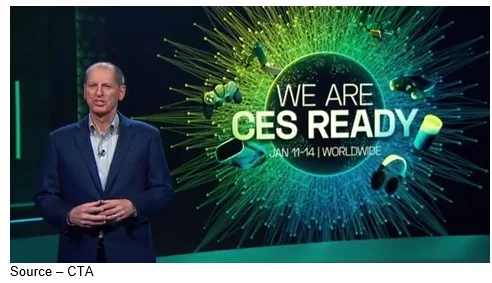 After years of working the floor at CES, it’s easy to summarize … dumb from the neck up, numb from the neck down.
After years of working the floor at CES, it’s easy to summarize … dumb from the neck up, numb from the neck down.
This year was worse.
You couldn’t “miss” a keynote, press event, panel session – seven days of pre and CES press events, news, analysis, projections – because they were there, online waiting for you.
The good stuff you revisit. The rest you hit delete.
Simply put, CES 2021 was different and challenging for Shapiro’s CTA crew … everyone!
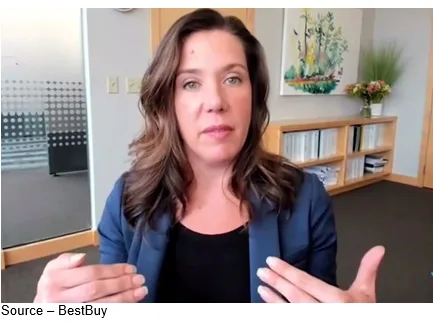 As Best Buy’s CEO Corie Barry said, “There’s no going back to the normal of 2019 … ever!”
As Best Buy’s CEO Corie Barry said, “There’s no going back to the normal of 2019 … ever!”
There was still a lot of solid news at CES. In fact, it might have been better because companies, management and marketing had to really focus on the clarity and effectiveness of their messages as well as review them and critically hone them.
The folks who did were spot on in getting attention and persuading/convincing people.
Those who didn’t wasted a helluva lot of time, money, effort.
So, the show, discussions were different.
Verizon’s Hans Vestberg laid the groundwork for all of the CES announcements because 2020 and the global lockdown made industries, businesses and individuals immerse themselves in tomorrow’s communications technology.
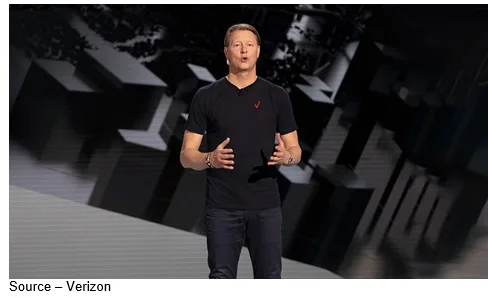 In a media briefing prior to his CES keynote Vestberg said, “We leapfrogged seven to 10 years in the data revolution.” Social distancing and working/learning remotely have been key in the faster adoption of areas such as telemedicine and touchless retail.
In a media briefing prior to his CES keynote Vestberg said, “We leapfrogged seven to 10 years in the data revolution.” Social distancing and working/learning remotely have been key in the faster adoption of areas such as telemedicine and touchless retail.
According to Vestberg, 5G is now available to over 200M people in 1,800 cities and towns; but more importantly, it is becoming the backbone of business and industry around the globe. The rollout of Verizon’s 5G Ultra-Wideband will handle the workload of the estimated 55B devices by 2025.
The network is being installed in 28 NFL stadiums this year–not just for sporting fanatics but also to use the locations for real-time, on-site multiplayer game venues.
Verizon also rolled out its millimeter-wave $50 home service which should provide download speeds of 300Mbps. The higher speed would have helped as people hunkered down when the average internet speeds took a beating because everyone was online.
To relieve the strain, a new wave of Wi-Fi 6 routers is not just faster but also more efficient for sharing bandwidth across all your home devices.
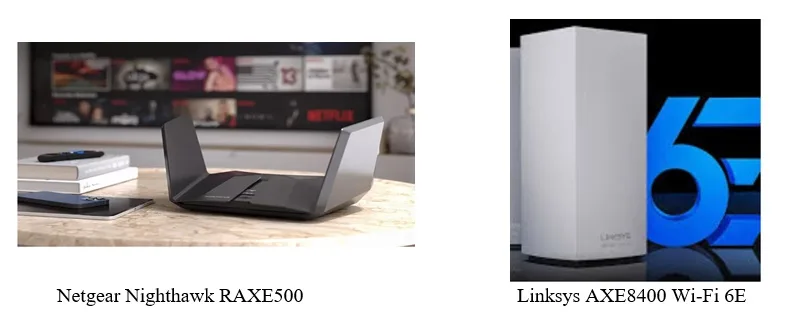 To handle all of your network-ready devices, all of the major router producers put their best face forward.
To handle all of your network-ready devices, all of the major router producers put their best face forward.
Netgear rolled out its Nighthawk RAXE500 Wi-Fi 6e unit that handles up to 12 separate streams while Asus unveiled its ROG Rapture gaming friendly unit.
Linksys’ new mesh unit covers up to 3,000 sq. ft. and supports Wi-Fi 6e for $499.
Wi-Fi 6 provides bandwidth for all of your devices – smartphones, computers, game consoles, the works without dropping a byte.
If we didn’t just have to get an update on what ATSC was doing, we might have skipped their online session because it almost felt as though we were peeking in on an engineering standards meeting with more technical discussion than application/user information.

ATSC 3.0 (NextGen TV) is an important advance in the terrestrial broadcast system because while you may shave or cut your cable bundle, it provides more than 20 standards to deliver OTA and OTT streams over the internet backbone you probably already have in your home or office.
In other words, it’s exciting stuff because streamer folks like Netflix, Disney + and others around the globe are bundling their content with the Pay-Tv providers who are focusing on handling the expanding content workload.
And yes … 5G, Wi-Fi 6 and ATSC 3.0 are also about streaming entertainment!
Riding on the distribution solutions; the key product areas at CES were TVs, PCs, mobile, transportation, home and healthcare.
New, better, more enhanced, more expensive TV sets are more than a passing interest for folks today because our cup runneth over with viewing options.

Samsung has been the leading TV vendor since 2015 and accounted for almost 20 percent of the total 230M units shipped last year.
At CES the leading players all put their biggest and best images forward.
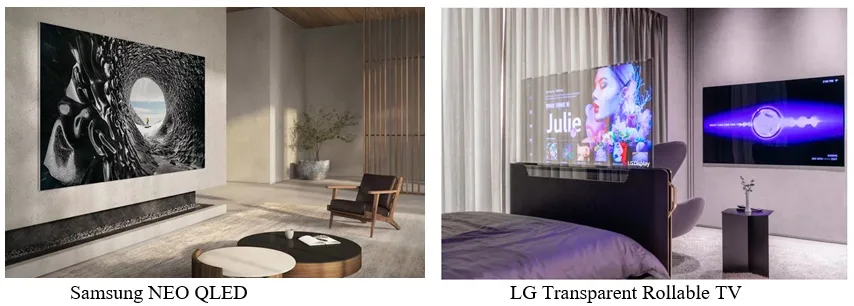 Samsung seemed to say go big or go home with their 110-in MicroLED screen – great depth, great luminance gradation and great six-figure price.
Samsung seemed to say go big or go home with their 110-in MicroLED screen – great depth, great luminance gradation and great six-figure price.
LG just keeps on rolling with a 55-in transparent OLED smart bed (spoiler there was also a rollable phone). And they introduced a 65-in OLED Eyesafe screen that’s supposed to be really good for your eyes just as Nielsen US adults were consuming a record 12 hrs., 12 min of content!
Sony unveiled 8K sets, OLED displays and 4K LED sets with acoustic multi-audio technology that makes the entire screen a speaker.
They also showed off a new Bvaria family that incorporates AI cognitive intelligence that mimics the human brain to adjust the images for perfect viewing.
Cool, we guess!
But people can’t be couch potatoes all the time.
They need to play games.
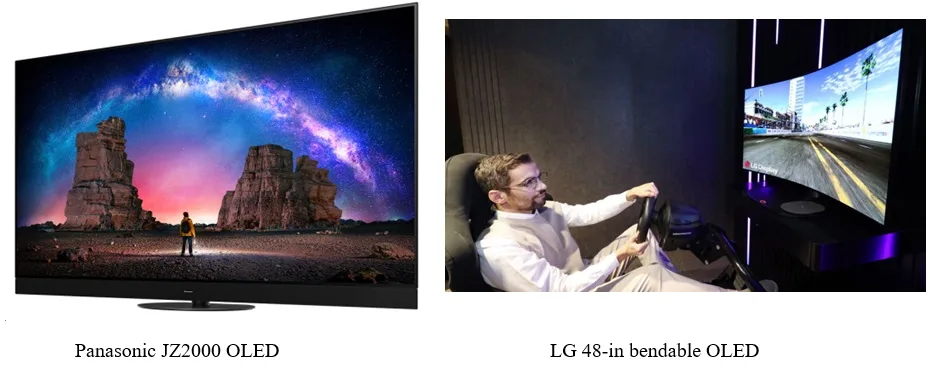 Panasonic unveiled an OLED set incorporating an HCX Pro AI processor that improves picture quality and delivers the very lowest latency for responsive gaming performance. It also includes an HDMI Signal Power Link that simplifies PC and set-top box connection.
Panasonic unveiled an OLED set incorporating an HCX Pro AI processor that improves picture quality and delivers the very lowest latency for responsive gaming performance. It also includes an HDMI Signal Power Link that simplifies PC and set-top box connection.
LG’s 48-in bendable cinematic sound OLED screen (no speakers needed) can be curved for improved gaming or flat for TV viewing.
Growth Returns
With nearly everyone working from home at least part of 2020 and students of every age suddenly finding their classroom consisting of a flat screen, people quickly discovered they needed to upgrade their computer systems.

As a result, the PC industry enjoyed its biggest year in six years, closing in on roughly 300M units in 2020, according to IDC.
But although demand around the globe and in nearly every product segment was growing, there was only one little problem.
There was a chip shortage that affected … everyone!
While some the chip folks are trying to reverse engineer Apple’s M1 chip, Intel surprised the industry in the middle of CES by sweet talking Pat Gelsinger into giving up his top-of-the-heap job at VMware and come back (he was there for 20 years) and get the chip giant back on a steady course.
The news didn’t really phase Nvidia’s Jensen Huang or his relative, Dr. Lisa Su, who not only righted the AMD ship but guided it into becoming a major CPU provider and serious competitor to the Nvidia GPU kingdom.
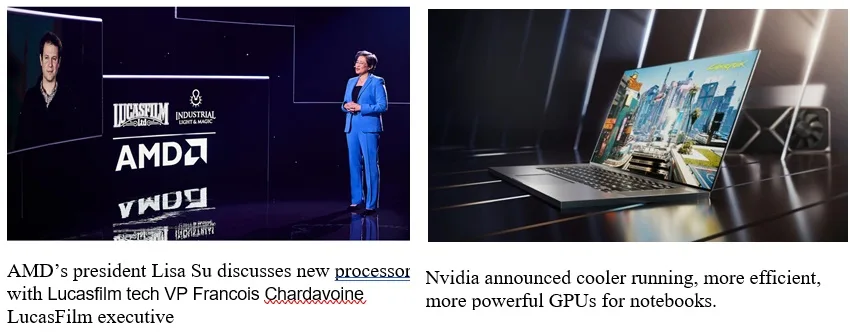 With the PC becoming an essential part of how people work, play and connect; AMD rolled out a full portfolio of Ryzen 5000 mobile processors.
With the PC becoming an essential part of how people work, play and connect; AMD rolled out a full portfolio of Ryzen 5000 mobile processors.
Sharing the virtual stage with Microsoft, LucasFilms and others; Dr. Su showcased the digital-first world for gamers, content creators, professionals and students. The chips are already appearing in more than 150 consumer/commercial notebooks from ASUS, HP and Lenovo.
The great thing we heard during her presentation was that enterprise-grade security and seamless manageability were going to be available to everyone.
While Nvidia’s desktop graphic cards continue to be ridiculously difficult to find, the company is bringing the performance technology to dozens of laptops. The RTX 3060 — RTX 3080 is being designed into more than 70 models with systems starting as low as $999. The GPUs will double power efficiency, giving users longer play and office productivity time.
# # #
Andy Marken – [email protected] – is an author of more than 700 articles on management, marketing, communications, industry trends in media & entertainment, consumer electronics, software and applications. An internationally recognized marketing/communications consultant with a broad range of technical and industry expertise especially in storage, storage management and film/video production fields; he has an extended range of relationships with business, industry trade press, online media and industry analysts/consultants.